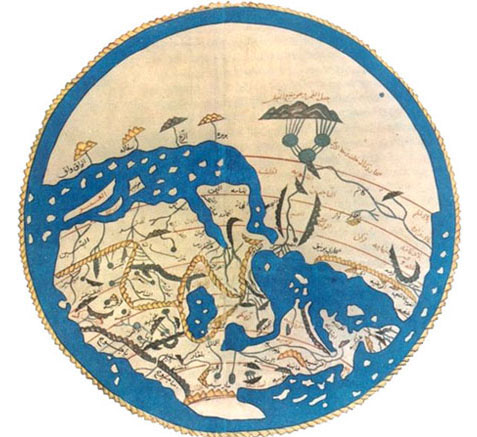Article of the Month - December 2022
“Domestic Slavery, Skin Colour, and Image Dialectic
in Thirteenth-Century Arabic Manuscripts,”
(Lamia Balafrej: Art History, UCLA)
Lamia Balafrej, "Domestic Slavery, Skin Colour, and Image Dialectic
in Thirteenth-Century Arabic Manuscripts," Art History 44 (2021): 1012—1036.
Keywords: medieval slavery • skin color • race • visual representation • Arabic manuscripts • domestic labor • Maqamat • image dialectic • the archive
Abstract:
This article expands the archive for slavery in the medieval islamicate world by examining the representations of enslaved people in a group of thirteenth- century manuscripts. it shows how artists used racialized imagery in which black skin always denoted subaltern enslaved status while light skin could connote a spectrum of social positions ranging from the free elite to the enslaved. Color difference also was used to signal hierarchy among enslaved people. The figure of the black slave offered a means to visually construct elite culture, with the black slave functioning as the negative counterpart of the cultured Arab. Yet despite the subaltern role played by the black slave, such imagery also reversed the reification of such enslaved people and rendered them visible.
Nomination Statement:
Balafrej’s subtle and provocative article dramatically expands the archive for slavery in the medieval Islamicate world to include visual sources. Her powerful exploration of the complex ways that artists used blackness and whiteness in their representation of enslaved people in a set of thirteenth-century manuscripts sheds new light on how race and visual coding operated in the medieval Mediterranean and encourages us to rethink categories of subalternity.
Authors’ Comment:
This article is linked to my current research project, which explores and historicizes intersections of art, embodiment, technology, labor, and social history in the medieval Mediterranean. One line of inquiry concerns the visual representation of labor, especially slavery. This has led me to research images of slaves in Arabic and Persian manuscripts, only to realize that no scholarly attention had been given to this material. So I gathered a few examples and wrote this article, as a way of starting a discussion about images and objects as sources for the study of labor, slavery, and race in the medieval Mediterranean. I am now at work on further lines of inquiry, including the representation of servants in the mechanical arts, in particular as animated, liquid-dispensing automata, another virtually untouched topic.
Would you like to discuss this article?
Start a thread on the Mediterranean Seminar list-server
See the other Articles of the Month here.
